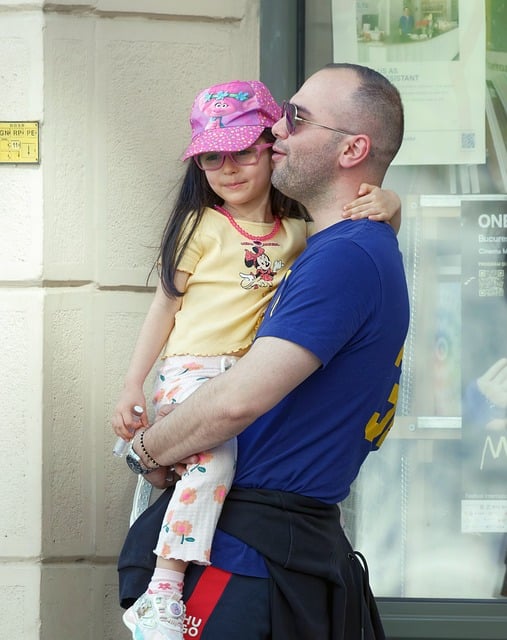In today's digital age, parental control apps empower parents to monitor children online effectively, track browsing history, set screen time limits, and block inappropriate content. These tools, enhanced by AI, provide real-time alerts for suspicious behavior, excessive screen time, and inappropriate content. Customizable settings allow personalized rules based on each child's age, fostering healthy digital habits while protecting them from cyberbullying and potential risks. Balancing privacy and safety through education and open communication strengthens the relationship between parents and children in navigating the online world securely.
In today’s digital era, understanding the online activities of our children is crucial for their safety. Parental control apps offer a solution to effectively monitor children’s internet usage, providing peace of mind and ensuring healthy digital habits. This article explores the importance of these tools, delving into key features, setting boundaries, and balancing privacy with safety. By leveraging parental control apps, parents can navigate the online world with their kids, fostering a secure and productive digital environment.
- Understanding the Need for Parental Control Apps
- Key Features to Look for in a Monitoring App
- Setting Boundaries and Rules with App Tools
- Balancing Privacy and Safety for Healthy Digital Habits
Understanding the Need for Parental Control Apps

In today’s digital era, ensuring the safety and well-being of our children while they navigate the internet is a top priority for many parents. With online risks such as cyberbullying, exposure to inappropriate content, and potential interactions with unknown individuals, it has become increasingly important to have tools that allow us to monitor children’s online activity effectively. Parental control apps step in as a solution, offering a way for parents to stay informed and involved in their child’s digital life without infringing upon their privacy or trust.
These apps provide a sense of security by enabling parents to track browsing history, set time limits on screen use, block access to certain websites or applications, and receive alerts when sensitive topics are searched. By utilizing these features, parents can proactively protect their children from online dangers, foster healthy digital habits, and promote a balanced approach to technology use. Understanding the need for such apps is crucial in ensuring that our kids can enjoy the benefits of the internet while staying safe in this ever-evolving digital landscape.
Key Features to Look for in a Monitoring App

When choosing a parental control app, several key features should be at the top of your list to effectively monitor children’s online activity. Firstly, look for robust monitoring capabilities that include real-time alerts for inappropriate content, excessive screen time, and suspicious behavior. These apps often employ advanced AI algorithms to scan through websites, messages, and applications, ensuring your child’s digital footprint is safe from potential dangers.
Additionally, consider the app’s ease of use and customization options. A user-friendly interface will make it simpler for you to set boundaries, manage access to specific content or apps, and receive regular activity reports. Customization allows you to tailor the app to your family’s unique needs, whether that means setting age-appropriate filters, scheduling screen time limits, or creating personalized rules for online behavior.
Setting Boundaries and Rules with App Tools

Setting boundaries and rules is a crucial aspect of responsible parenting, especially in today’s digital age where kids spend a significant amount of time online. Parental control apps offer a range of tools to help parents establish these guidelines effectively. These apps allow you to create customized rules tailored to each child’s age and developmental stage. For instance, you can set time limits for specific activities or block access to inappropriate content, ensuring your children engage with the internet safely.
By utilizing app features like content filtering, website blocking, and usage monitoring, parents can guide their kids’ online behavior. These tools empower parents to teach digital citizenship, promote healthy habits, and protect their children from potential online risks. With clear boundaries in place, kids learn self-discipline while enjoying the benefits of the digital world under their parents’ watchful eye.
Balancing Privacy and Safety for Healthy Digital Habits

Balancing privacy and safety is an essential aspect of fostering healthy digital habits for children. While parental control apps offer a valuable tool to monitor children’s online activities, it’s crucial to use them judiciously. Over-monitoring can infringe on a child’s privacy and potentially damage trust. Instead, parents should aim to educate their children about online risks and empower them to make responsible decisions. This approach encourages open communication and develops digital literacy skills.
A fine line must be drawn between keeping an eye on their activities and allowing for age-appropriate independence. By setting clear boundaries and rules, parents can ensure their children’s safety without sacrificing their privacy. Regular conversations about online experiences and behavior can further strengthen this balance, teaching kids about potential dangers while instilling a sense of security and respect for personal space.
